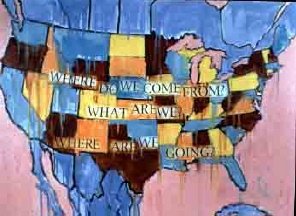|
Tuesday 8/21
Welcome! This course
takes an American Indian Studies approach: we'll learn what Native people think
about themselves, about others, and the world, expressed through oral and
written literatures. We'll learn from Native
speakers and writers, and approach the material from a Native American perspective,
based on indigenous values and epistemologies.
3 Crucial Ideas to Understanding American
Indian people and their literatures:
1) American Indian tribes are sovereign and each defines its sovereignty
differently, given its own history and culture and treaty/executive order
acknowledgement. Tribes are sovereign primarily because they are asserting their
own will, not because the US granted it.
2) Each tribe has a continuing, unique
and rich cultural tradition, still alive and well today. Many urban Indians retain
ties to their homelands and live "Indian lives" in cities.
3) Nevertheless, Indians have
experienced overwhelming assimilation and genocidal forces due to US
policies and missionaries.
The theme of this course is Resistance and
Renewal, designating Native Americans' determination to resist complete
destruction by or assimilation into Settler culture. This is accomplished by a
continual renewal of culture and identity. Primary values of Native people
include, Respect * Reciprocity * Relationality
Additional Indigenous values/themes our course
will explore are:
Wisdom Sits in Place
All My Relations
Circle of Life
The Trickster/Resilience
Guest: Joe Roberts, UI Service Learning Program
Service Learning Opportunities: Tutoring at Plummer, Lapwai,
Native American Prisoners Inside-Out
Prison Exchange Project, Sapatq'ayn Cinema
Unit 1: Native Worldviews, Oral
Literatures
Thursday 8/23
Read: "Essential Understandings" button at
top left
and
PDF: Federal US American Indian Policy and
American Indian Demographics
Assignment 1: Write About today's discussion
Tuesday 8/28
Assignment 1 due
Video (30 min):
Native Voices: Resistance and Renewal in American Indian
Literature (includes authors Simon Ortiz, Joy Harjo, Paula
Gunn Allen, Leslie Marmon Silko, Greg Sarris, and Lucy Tapahanso. from the
online American literature survey american passages.
Assignment 2: Write a
2 page (typed, double-spaced) response to Native Voices.
Resources for the Video
Thursday
8/30
Share responses to Native Voices
"Huckleberries,"
Rodney Free, pp 1 - 56
to be a guest
to go inside the Tin Shed
to see from the inside out
to feel it
Storytellers Online:
Stories of the Lewis and Clark
Trail Tribes
Nimiipuu (Nez Perce)
About Stories
Santa Fe
Indian School Spoken Word Team
Tuesday 9/4
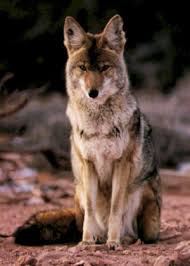 

Animal Tales
excerpt from Salmon and His People: Fish and
Fishing in Nez Perce Culture, Landeen and Pinkham
excerpt from Nez Perce Coyote Tales: The Myth Cycle,
Walker and Matthews
Reading Graphic Literature:
Graphic Novels, Paul Gravett (pdf)
Group One: Trickster Tales
Dara, Conor, Latona,
Billy, Mason S, Meagan, Kirk
Trickster: Native American Tales: a
graphic collection

Thursday
9/6
About American Indian comics
Groups present from Trickster
Tuesday 9/11
Groups present from Trickster
Thursday
9/13
Conclude Trickster
Tuesday 9/18
Nez Perce Stories and Place
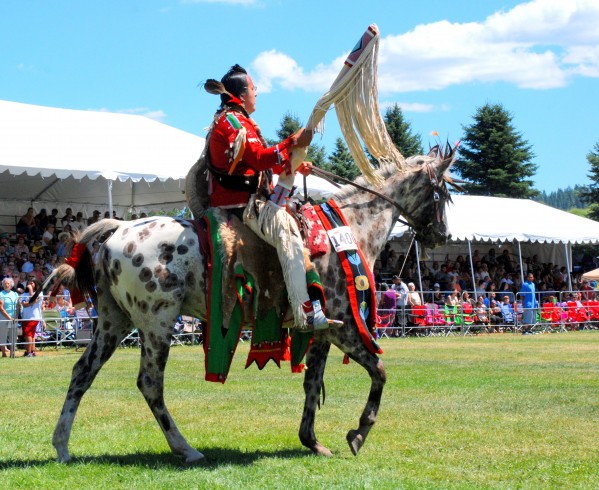 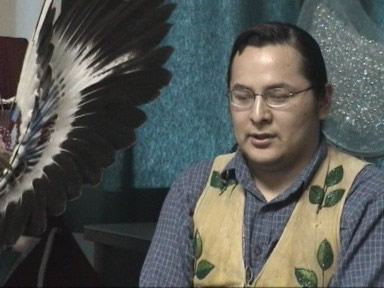
Visit from Nez Perce storyteller NAKIA WILLIAMSON
Thursday 9/20
About Horace Axtell
A Little Bit of Wisdom, Preface - 67
and read the Glossary on pp 215-217
Visit from Horace Axtell and Margo Aragon

 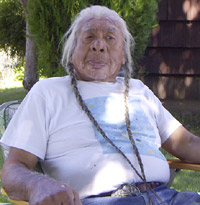
Tuesday 9/25
Conclude, A little bit of
wisdom
Assign Exam 1 on Oral Literature and
Place: create groups to create stories

Coyote Story Project: form groups of 3 to create your own Coyote Story on
UI campus to illustrate the Indigenous concept "Wisdom Sits In Places"
Coyote, as you know, is a trickster, a transformer and a bungling egomaniac. But
he also tries to solve problems and make life better. He always
interacts with other animal people, sometimes competing with them,
sometimes cooperating with them--even helping them, though he often needs their
help as well. He's a genius and a fool. Both community-minded AND exceedingly
self-centered. Think about Coyote's attributes and those of the other animal
people. Through Coyote stories we learn how "things came to be," such as why
Grizzly Bear has a flat nose, and why death is permanent. Through these stories
we learn how to survive successfully in our communities and in the places we
live.
Your assignment is to form groups of 3 or 4, walk the UI Campus until you find
a "place" that you believe can tell a story. How did this "place"
come to be? And what lesson does it teach us? Create a story about your "place" that illustrates the
concept "Wisdom Sits in Places." The campus is a "culture" with practices,
rituals and they all originate in place (campus) and culture (university
practices). The learning goal is for you to "see from the inside out," rethink
place and to experience story creation and performance. Turn what seems like
"just" a place into a story. What evidence do you
find of Coyote and the animal peoples' adventures here?
brief thoughts about final projects
Service Learning updates
Groups for reports
Theories and approaches to Native
literature 2 groups
Perma Red and Indigenous Feminism 1 group
Winter in the Blood 2 groups:
the novel and the film
The Lesser Blessed 2 groups:
Dogrib origin story/Van Camp/the film
Humor in Native America

E N T E R T H E E X H I B I T B
E L O W:
Indian Humor Exhibit
at Smithsonian
Deloria (Lakota), "Indian Humor"
from Nothing But the Truth: An Anthology of Native American Literature (PDF)
Click on the "Indian Humor" button above left side of the screen and read . . .
For discussion:
What are the traditional as well as post-colonial functions of humor in Native societies?
What are
the advantages of employing humor in difficult contexts, such as the German
Holocaust? How does this apply to the American Holocaust?
Video clips from:
Charlie Hill on Richard
Pryor Show 1977
Dr. Greene's Original Pain
Reliever
The 1491's
Thursday 9/27
No Class: work on your exam/story
Tuesday 10/2
tell your Coyote stories & turn in written component
Thursday 10/4
Historical Trauma and Healing in Native America
Native American Studies as a field was created to support
American Indian self-determination and cultural revitalization. Thus, learning
about NA historical trauma and healing is important to the study and
understanding of Native American literatures. We will attempt to connect the pre-colonized life world of
Native Americans to colonized life worlds: how do both seek balance and
healing and balance through literary arts, oral and written.
Native Americans and the Trauma
of History, Duran, Duran, and Brave Heart (PDF)
Documentaries:
A Century of Genocide:
The Residential School Experience
Optional: For further reading on Historical
Trauma/Intergenerational Grief you may read:
Maria Yellow Horse Brave Heart, "The American
Indian Holocaust: Healing Unresolved Grief" (starts on p.60)(pdf)
Lisa Poupart, "The Familiar Face of Genocide: Internalized Oppression
Among Native Americans" (pdf)
Tuesday 10/9
American Holocaust: When It's All Over I'll Still Be Indian
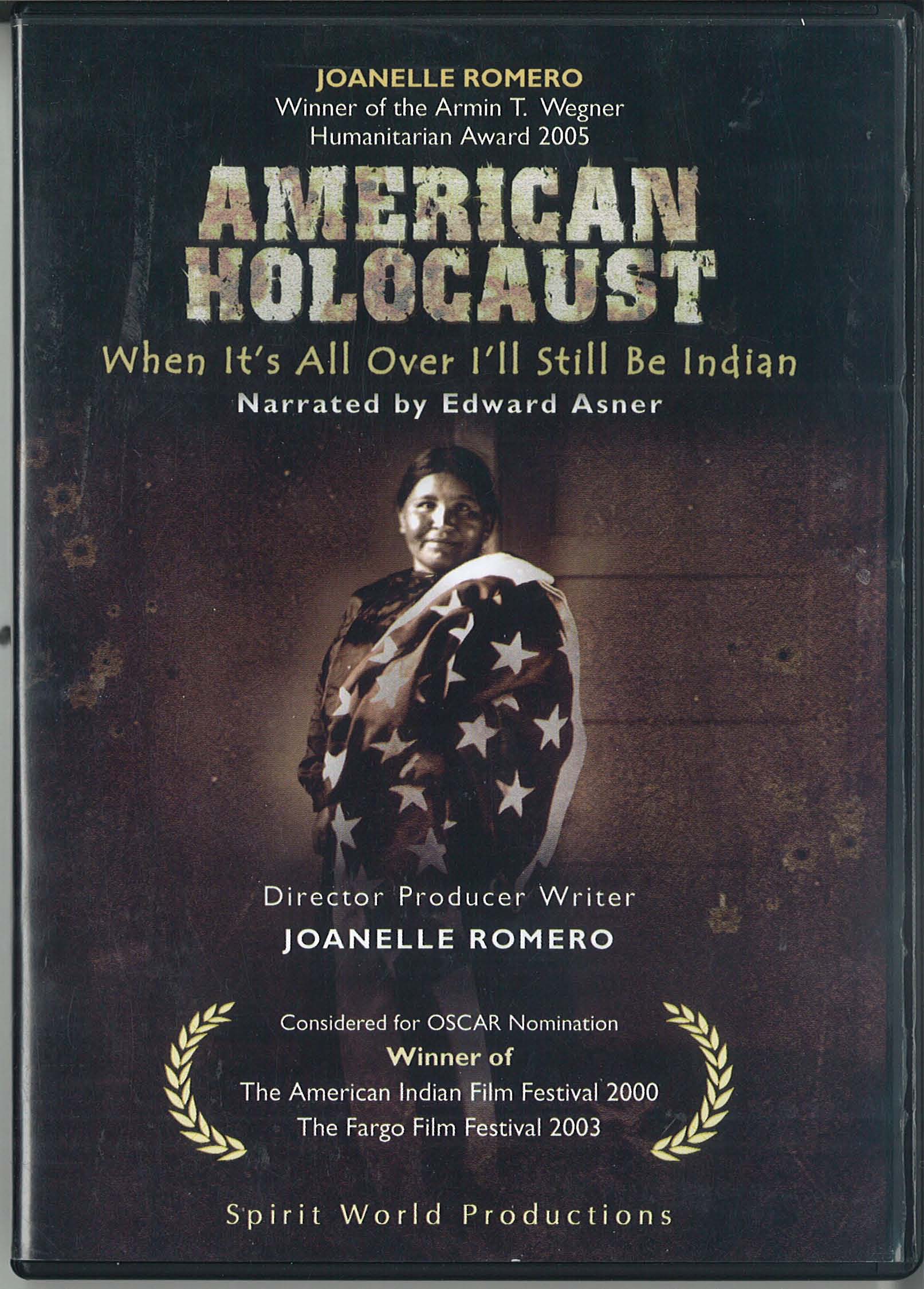
Free write: your response to the
Historical Trauma films
Discussion Questions for Duran:
What are colonialism and imperialism?
What are the effects of colonialism on the Native American "life world"?
How have Native Americans reacted to the system of colonization?
Understanding this history and the intergenerational trauma it produced is a
vital part of the healing and regenerative process for Native American people
today.
What is "Postcolonial thinking"?
What are "academic colonial
processes" ?
What is "epistemic violence"?
What is "counter-hegemonic ideology"?
Hegemony: Ideological/cultural domination by the assertion of
universality and neutrality and by disavowal of all other cultures forms or
interpretations. (68) A Eurocentric mode of representation of Native Americans
is a biased assessment of non-Western cultures.
What is the "Soul Wound"?
Why would loss of the traditional environment be a severe spiritual and
psychological injury?
What happens when your own government is the oppressor?
What are the ramifications for Native people when the "American holocaust" is
not acknowledged by the majority culture?
See top of p. 69 for a discussion of the inadequacy of western healing models,
and the idea that they actually can inflict "epistemic violence"
See bottom of p. 70 for a definition of "Postcolonial thought"
How can simply educating Native Americans (and other Americans) about historical trauma be healing?
Thursday 10/11
The Boarding School Experience
About Indian Boarding Schools
A Photo Gallery of the Indian Boarding School
Louise Erdrich (Ojibway),
"indian Boarding School: The Runaways"
Canadian Apology and
Acceptance by Tribal
Leaders and
Australian Apology
VIdeo:
Our Spirits
Don't Speak English
Andrew
Windyboy's testimony
For further reading: "American
Indian Boarding School Experiences: Recent Native Perspectives"
Tuesday 10/16
Silko, Leslie Marmon: "Lullaby" (pdf)
Handouts: Oppression Continuum and What is an Ally? (pdfs)
--what for you is most
significant about Native American historical trauma and intergenerational grief?
--what does being an ally mean to you?
--where are you on the continuum of racism? where do you want to be?
--how can non-Natives best be allies to Native people?
--how would becoming an ally help you, other people and the larger group?
Indigenous theories of & approaches
to literature
Thursday 10/18
Group One:
Simon Ortiz, Towards a National Indian Literature: Cultural Authenticity in
Nationalism"
Kim Roppolo,
"Toward a Tribal-Centered Reading of Native American Literature"
(pdf)
"Homing In," Wm. Bevis
"Communitism," Jace Weaver: That the People Might Live
David
Group Two:
"Mythic Realism," Louis Owens in Other Destinies
"Tribalography," Leanne Howe
"Survivance," Gerald Vizenor
"That's Raven's Talk: Holophrastic Approaches"
Kendra
Group Three:
Reports on Indigenous Feminism (2)
Dara and ?
Tuesday 10/23
Reports on
Author Debra Magpie Earling, 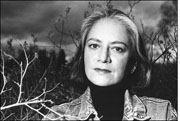
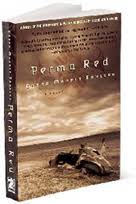
the
Flathead Reservation and history, setting for Perma Red
Kassidy, Katie, Laura,
Bridger, Spencer, Whitney
Map of Montana's
Tribal Nations
Brief Salish Tribal Timeline
1700s: The Salish acquired horses,
making them a target of raiding parties of Blackfeet and other enemies.
1804-6: The tribe
assisted the Lewis and Clark Expedition with food and horses. The expedition was
a catalyst for the fur trade which brought goods to make life easier, as well as
diseases, alcohol and guns.
1840-1841: In the early 1840's one
of their leaders had a "vision" of the "Blackrobes" who would come with
spiritual teaching. A group of Salish men traveled to St. Joseph's Mission on
the Potawatomi Reservation at Council Bluffs, Iowa to meet the "Blackrobes,"
requesting they come and bring spiritual teaching. Father Pierre-Jean DeSmet
left for the Bitterroot Valley, where he established the St. Mary's Mission
1855: Hellgate Treaty: the Salish ceded over 22 million acres to the
U.S.
1864: Catholics established a boys and girls boarding school on the
reservation
1872: The Salish were forced from their homeland in the Bitterroot
Valley to the Jocko Reservation (later the Flathead Reservation), a tragedy for
the tribe
1890: Ursuline nuns began a kindergarten which later grew into a grade
school and then a high school.
1891: forced removal of last few tribal members from the Bitterroot
Valley to the Flathead Reservation
1904: Flathead Allotment Act divided the land and opened it to white
settlement
1910: as result of the Dawes Act, homesteaders became the majority
landholders on the Flathead Reservation
1935: The Salish and Kootenai tribes of Montana joined to become The
Confederated Salish and Kootenai Tribes
Debra Magpie
Earling
Debra Magpie Earling's debut novel Perma Red is something of a
miracle. The University of Montana creative writing professor began writing it
in 1984 and, over the years, it has been through at least nine different
rewrites, trimmed from an epic-length 800 pages to a compact 288, burned to a
crisp in a house fire, and rejected by publishers who loved the writing but
thought the original ending too dark and brutal. Through it all, Earling
persevered and the novel stands as a testament to her faith and patience.
Resources for Earling and Perma
Red:
"Facing Down Violence," Jan Johnson (pdf)
Read Perma Red, through Chapter
7(Officer Kicking Woman: here)
fyi: Debra's relative,
Chief Charlot
Map of
Perma Red Country
Thursday 10/25
Perma Red, through pp 218
(Charlie Kicking Woman: reservation death)
Tuesday 10/30 (Stick
Game in Commons Clearwater Rm at 11am)
Conclude Perma Red, (Louise: the long hunger - end
Group Four: Intro to James Welch and Winter in the Blood:
the novel and the movie ("Trailer")
Kiley, Keila, Briana, Eddy
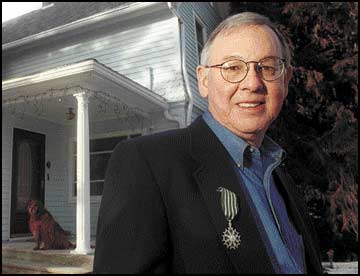
Background on James Welch (Blackfeet/Gros Ventre)
James Welch at Internet
Public Library
Ploughshares (a literary journal) story on James Welch
The MOVIE
Winter in the Blood, Chaps 1 -14,
pp. Intro - 35
Thursday 11/1
Winter in the Blood, through Chapter 24; pp - 83
Tuesday 11/6
Read:
"The Social World of James Welch" by Matt Herman
conclude WITB
Assign Exam 2
Thursday 11/8
Visit from Steven Paul Judd (Distinguished American Indian Speakers
Series)
Tuesday 11/13
The Lesser Blessed
Group 5: The Lesser Blessed, Richard Van Camp
Derek, Saleeha, Justin, Claire, Kirsten, Edward
Dogrib Origin Story: "The Woman and the Pups"
INTRODUCING Richard Van
Camp

read his bio here on Nativewiki, hear
him read poetry, learn what he's up to--
The Lesser Blessed will soon be released as a movie! See the
Trailer
Sam McKegncy,
'Beautiful
Hunters with Strong Medicine': Indigenous Masculinity and Kinship in Richard Van
Camp's The Lesser Blessed"
Thursday 11/15
Final Paper/Project Proposal Due: Follow instructions at bottom of
"Final Project"
Exam 2 due
Deconstructing the Myths of the First "Thanksgiving"
Thanksgiving Break - 11/19 - 11/23
Native American Heritage Day 11/23
Tuesday 11/27
Professor returns Final
Project Proposals
Finish Discussion of The Lesser Blessed
Thursday 11/29
UNIT 2: POETRY
POETRY: Group 7: Melissa, Sarai, Amanda,
Becky, Sam
Brian Swann,
"Introduction: Only the Beginning," from Nothing But the Truth: An
Anthology of Native American Literature Ed. James Ruppert and John Purdy,
2001
Kimberly Blaeser (Anishinaabe), Nothing But the Truth:
"The Possibilities of a Native Poetics"
Contemporary Native American poetics are "infused with echoes of the song poems
and ceremonial literatures of the tribes, born out of the indigenous revolution,
filled with the dialogues of inter-textuality, sometimes linked to the cadence
and construction of 'an-other' language, frequently self-conscious, and often
resistant to genre distinctions and formal structures" (412).
Recognizable facets of Indian-authored
poetry:
1) a significant spiritual and physical landscape
2) an investment in political struggle (they carry history)
3) a search for or an attempt to articulate connections with the
individual, tribal or pan-Indian legacy
4) connections to the oral tradition
5) engages in framing a response to the perceived expectations of Native
literature, and/or how non-Natives have represented Indians.
"One function of American Indian poetry has
been to 'resist cultural erasure' to question the dominant narrative, and to
remember our histories clearly as a way to resist both amnesia and nostalgia."
"Literacy in English has not prevented
Indian writers from exploring the possibilities for articulating the truth of
their own visions through poetry. These visions come out of an exploration of
what it means to be Indian and what it means to come from a cultural and
historical past that is unique within American experience."
Poetry often serves to tell us about the
places we've been as a people or about the places we wish to be. What we admire
about it, or about the poets who make it, are the ways poetry may
succinctly distill and render human experience into language. Language is
a vehicle of ceremony [and healing]. " poet Janice Gould (Maidu)
The Oral World into Written Poetry
from
Navajo Nightway Chant
to
The
Delight Song of Tsoai-Talee --N. Scott Momaday 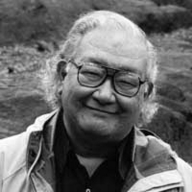

|
I am a feather on the
bright sky
I am the blue horse that runs in the plain
I am the fish that rolls, shining, in the water
I am the shadow that follows a child
I am the evening light, the lustre of meadows
I am an eagle playing with the wind
I am a cluster of bright beads
I am the farthest star
I am the cold of the dawn
I am the roaring of the rain
I am the glitter on the crust of the snow
I am the long track of the moon in a lake
I am a flame of four colors
I am a deer standing away in the dusk
I am a field of sumac and pomme blanche
I am an angle of geese in the winter sky
I am the hunger of a young wolf
I am the whole dream of these things
You see, I am alive, I am alive
I stand in good relation to the earth
I stand in good relation to the gods
I stand in good relation to everything that is beautiful
I stand in good relation to the daughter of Tsen-tainte
You see, I am alive, I am alive
|
 from Angle of Geese, 1974
from Angle of Geese, 1974 |
Native Poetry Records and Retells History

The Ghost Dance
Ghost
Dance Songs
Massacre at Wounded Knee


N. Scott Momaday, "December 29, 1890: Wounded Knee Creek"
December 29, 1890 --N. Scott
Momaday 

|
|
Wounded Knee Creek
In the shine of photographs
are the slain, frozen and black
on a simple field of snow.
They image ceremony:
women and children dancing,
old men prancing, making fun.
In autumn there were songs, long
since muted in the blizzard.
In summer the wild buckwheat
shone like fox fur and quillwork,
and dusk guttered on the creek.
Now in serene attitudes
of dance, the dead in glossy
death are drawn in ancient light.
|
 from In the Presence of the Sun, 1992
from In the Presence of the Sun, 1992 |
(Many Excellent Native
American Poems for your perusal)
Tuesday 12/4
WENDY ROSE
Wendy
Rose (background/bio)
"I Expected My Skin and My Blood to Ripen"
Does poetry influence policymaking?
Native American Graves Repatriation Act
(1990)
Nez Perce Repatriation Notice

Sherman Alexie
video on his newest book of poetry, "Faces."
Sherman Alexie, "My Heroes Have Never Been Cowboys"

1.
In the reservation textbooks, we learned Indians were invented in 1492 by a
crazy mixed-blood named Columbus. Immediately after class dismissal, the Indian
children traded in those American stories and songs for a pair of tribal shoes.
These boots are made for walking, babe, and
that’s just what they’ll do. One of these days these boots are gonna walk all
over you.
2.
Did you know that in 1492 every Indian instantly became an extra in the Great
American Western? But wait, I never wondered what happened to Randolph Scott or
Tom Mix. The Lone Ranger was never in my vocabulary. On the reservation, when we
played Indians and cowboys, all of us little Skins fought on the same side
against the cowboys in our minds. We never lost.
3.
Indians never lost their West, so how come I walk into the supermarket and find
a dozen cowboy books telling How The West Was
Won? Curious, I travel to the world’s largest shopping mall, find the
Lost and Found department. “Excuse me,” I say. “I seem to have lost the West.
Has anyone turned it in?” The clerk tells me I can find it in the Sears Home
Entertainment Department, blasting away on fifty televisions.
4.
On Saturday morning television, the cowboy has fifty bullets in his six-shooter;
he never needs to reload. It’s just one more miracle for this country’s heroes.
5.
My heroes have never been cowboys; my heroes carry guns in their minds.
6.
Win their hearts and minds and we win the war.
Can you hear that song echo across history? If you give the Indian a cup of
coffee with six cubes of sugar, he’ll be your servant. If you give the Indian a
cigarette and a book of matches, he’ll be your friend. If you give the Indian a
can of commodities, he’ll be your lover. He’ll hold you tight in his arms,
cowboy and two-step you outside.
7.
Outside, it’s cold and a confused snow falls in May. I’m watching some western
on TBS, colorized, but the story remains the same. Three cowboys string
telegraph wire across the plains until they are confronted by the entire Sioux
nation. The cowboys, 19th century geniuses, talk the Indians into touching the
wire, holding it in their hands and mouths. After a dozen or so have hold of the
wire, the cowboys crank the portable generator and electrocute some of the
Indians with a European flame and chase the rest of them away, bareback and
burned. All these years later, the message tapped across my skin remains the
same.
8.
It’s the same old story whispered on the television in every HUD house on the
reservation. It’s 500 years of that same screaming song, translated from the
American.
9.
Lester Falls Apart found the American dream in a game of Russian Roulette: one
bullet and five empty chambers. “It’s Manifest Destiny,” Lester said just before
he pulled the trigger five times quick. “I missed,” Lester said just before he
reloaded the pistol: one empty chamber and five bullets. “Maybe we should call
this Reservation Roulett,” Lester said just before he pulled the trigger once at
his temple and five more times as he pointed the pistol toward the sky.
10.
Looking up into the night sky, I asked my brother what he thought God looked
like and he said “God probably looks like John Wayne.”
11.
We’ve all killed John Wayne more than once. When we burned the ant pile in our
backyard, my brother and I imagined those ants were some cavalry or another.
When Brian, that insane Indian boy from across the street, suffocated
neighborhood dogs and stuffed their bodies into the reservation high school
basement, he must have imagined those dogs were cowboys, come back to break
another treaty.
12.
Every frame of the black and white western is a treaty; every scene in this
elaborate serial is a promise. But what about the reservation home movies? What
about the reservation heroes? I remember this: Down near Bull’s Pasture, Eugene
stood on the pavement with a gallon of tequila under his arm. I watched in the
rearview mirror as he raised his arm to wave goodbye and dropped the bottle,
glass and dreams of the weekend shattered. After all these years, that moment is
still the saddest of my whole life.
13.
Your whole life can be changed by the smallest pain.
14.
Pain is never added to pain. It multiplies.
Arthur, here we are again, you and I, fancydancing through the geometric
progression of our dreams. Twenty years ago, we never believed we’d lose. Twenty
years ago, television was our way of finding heroes and spirit animals. Twenty
years ago, we never knew we’d spend the rest of our lives in the reservation of
our minds, never knew we’d stand outside the gates of the Spokane Indian
Reservation without a key to let ourselves back inside. From a distance, that
familiar song. Is it country and western? Is it the sound of hearts breaking?
Every song remains the same here in America, this country of the Big Sky and
Manifest Destiny, this country of John Wayne and broken treaties. Arthur, I have
no words which can save our lives, no words approaching forgiveness, no words
flashed across the screen at the reservation drive-in, no words promising either
of us top billing. Extras, Arthur, we’re all extras.
Horses, by Sherman Alexie
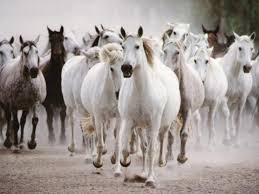
for your perusal:
A Serious Collection of Alexie Poems
Joy Harjo (Creek)

"Stories and songs are like humans who when
they laugh are indestructible" Joy Harjo
Joy Harjo, Text of
"A Postcolonial
Tale"
"I Give You Back"
|
I
Give You Back --Joy Harjo
|
|
I release you, my beautiful and terrible fear. I
release you. You were my beloved and hated twin, but now, I don't know
you as myself. I release you with all the pain I would know at the
death of my daughters.
You are not my blood anymore.
I give you back to the white soldiers who burned down
my home, beheaded my children, raped and sodomized my brothers and
sisters. I give you back to those who stole the food from our plates
when we were starving.
I release you, fear, because you hold these scenes in
front of me and I was born with eyes that can never close.
I release you, fear, so you can no longer keep me naked
and frozen in the winter, or smothered under blankets in the summer.
I release you I release you I release you I release
you
I am not afraid to be angry. I am not afraid to
rejoice. I am not afraid to be black. I am not afraid to be white. I
am not afraid to be hungry. I am not afraid to be full. I am not
afraid to be hated. I am not afraid to be loved.
to be loved, to be loved, fear.
Oh, you have choked me, but I gave you the leash. You
have gutted me but I gave you the knife. You have devoured me, but I
laid myself across the fire. You held my mother down and raped her,
but I gave you the heated thing.
I take myself back, fear. You are not my shadow any
longer. I won't hold you in my hands. You can't live in my eyes, my
ears, my voice my belly, or in my heart my heart my heart my heart
But come here, fear I am alive and you are so afraid
of dying.
from She Had Some
Horses, 1983 |
|
Linda Hogan
Who
Will Speak? --Linda Hogan
|
|
If all the animals came from the hills,
if all the fish
came from the rivers,
and the birds came down from the sky
we would
know our lives,
small,
somewhere between the mountain
and the ant.
We would see what we do pass by
and return
around earth's curve.
All I know are these rivers,
the air and wind
carving
down the trees
with their invisible hands
until the trees are bent
figures of old men
and then only the empty space,
a longing that
passes.
And that sorrow says,
the animals,
who will speak for
them?
Who will make houses of air
with their words?
And the mouth of a man,
the tongue
that belongs to
grass and light
and the four-legged creatures.
He speaks of tomorrow.
He gives voice to the small animals.
He gives a seat to the eagles.
Words for the fish.
The golden light of creation.
Light. Lumine. The world returns.
I do not want to break this spell.
I do not want the
words to fall away.
I do not want to break this spell.
(for Oren Lyons, 1978)
|
|
from Eclipse,
1983 |
Louise Erdrich (Anishinaabe)
"Dear John Wayne"

August and the drive-in picture is packed.
We lounge on the hood of the Pontiac
surrounded by the slow-burning spirals they sell
at the window, to vanquish the hordes of mosquitoes.
Nothing works. They break through the smoke screen for blood.
Always the lookout spots the Indian first,
spread north to south, barring progress.
The Sioux or some other Plains bunch
in spectacular columns, ICBM missiles,
feathers bristling in the meaningful sunset.
The drum breaks. There will be no parlance.
Only the arrows whining, a death-cloud of nerves
swarming down on the settlers
who die beautifully, tumbling like dust weeds
into the history that brought us all here
together: this wide screen beneath the sign of the bear.
The sky fills, acres of blue squint and eye
that the crowd cheers. His face moves over us,
a thick cloud of vengeance, pitted
like the land that was once flesh. Each rut,
each scar makes a promise: It is
not over, this fight, not as long as you resist.
Everything we see belongs to us.
A few laughing Indians fall over the hood
slipping in the hot spilled butter.
The eye sees a lot, John, but the heart is so blind.
Death makes us owners of nothing.
He smiles, a horizon of teeth
the credits reel over, and then the white fields
again blowing in the true-to-life dark.
The dark films over everything.
We get into the car
scratching our mosquito bites, speechless and small
as people are when the movie is done.
We are back in our skins.
How can we help but keep hearing his voice,
the flip side of the sound track, still playing:
Come on, boys, we got them
where we want them, drunk, running.
They'll give us what we want, what we need.
Even his disease was the idea of taking everything.
Those cells, burning, doubling, splitting out of their skins.
discuss the setting, speaker, imagery and themes
"The Strange People," Louise Erdrich
The antelope are strange people ... they are beautiful to
look at, and yet they are tricky. We do not trust them. They appear and
disappear; they are like shadows on the plains. Because of their great
beauty, young men sometimes follow the antelope and are lost forever. Even
if those foolish ones find themselves and return, they are never again right
in their heads.
—Pretty Shield,
Medicine Woman of the Crows
(transcribed and edited by Frank Linderman (1932)
All night I am the doe, breathing
his name in a frozen field,
the small mist of the word
drifting always before me.
And again he has heard it
and I have gone burning
to meet him, the jacklight
fills my eyes with blue fire;
the heart in my chest
explodes like a hot stone.
Then slung like a sack
in the back of his pickup,
I wipe the death scum
from my mouth, sit up laughing
and shriek in my speeding grave.
Safely shut in the garage,
when he sharpens his knife
and thinks to have me, like that,
I come toward him,
a lean gray witch
through the bullets that enter and dissolve.
I sit in his house
drinking coffee till dawn
and leave as frost reddens on hubcaps,
crawling back into my shadowy body.
All day, asleep in clean grasses,
I dream of the one who could really wound me.
Not with weapons, not with a kiss, not with a look.
Not even with his goodness.
If a man was never to lie to me. Never lie to me.
I swear I would never leave him.
Louise Erdrich, "The Strange People" from Original Fire:
Selected and New Poems. Copyright © 2003 by Louise Erdrich. Reprinted with
the permission of HarperCollins Publishers, Inc.
Thursday, 12/6
Phil George (Nez Perce)
from his book Kautsa (Grandmother)
Name Giveaway
That teacher gave me a new name. . . again.
She never even had feasts or a giveaway!
Still I do not know what “George” means:
and now she calls me “Phillip.”
Two Flocks of Geese
Lighting Upon Still Waters
must be a
name too hard to remember.
Salmon Return
Like many Grandfathers before me,
I spear Salmon: splashing, flapping.
These echoing waters no longer your home.
Up Celilo Falls you will dance no more.
Cleansed, Grandmother will weave
willows into your needle-boned flesh.
Beside night fires you will roast—
Fat oozing, dripping, sizzling.
My people will not go hungry.
We fast. We sing. We feast.
May your spirit always live, my friend,
if even in the Moon of High Waters.
From saltwaters you swim upstream to die.
We remember: “Return home to die.”
Moon of Huckleberries
Black Bear sang, drumming on a log:
“Come, bring your biggest baskets
To the best berry patches.
I’ll show you.”
“If you maidens get lost—
Just follow my dung,
Just follow my dung.”
Black Bear sang, drumming on a log.
Tiffany Midge
(Standing Rock Sioux), MFA (UI)
About Tiffany Midge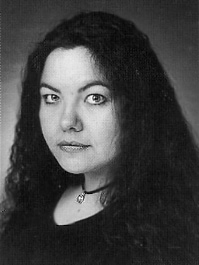
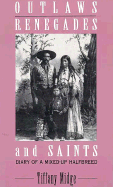
A
selection of Tiffany's poems
be sure to read all the poems here
and one of Tiffany's favorites:
Nora Dauenhauer "How to Cook a Wild Salmon"
http://poeticsandpolitics.arizona.edu/dauenhauer/salmon.htm
Final Paper Due Monday 12/10, BRINK 200, my mailbox by
5:00 PM
Have a Great Break!
______________________________________________________________________________________
from previous semesters . . .
New Engl 484 presentation.ppt
HooPalousa basketball game,
7:30 Memorial Gym with Sherman Alexie
Sherman Alexie's website
Video Clips: Sherman Alexie: Open All Night (NOW/PBS)
Video Clip: 2001 World Heavyweight Poetry Championship with Sherman Alexie
Alexie on Colbert
Lecture:
Sherman Alexie's Postmodern Aesthetics
FABULOUS INTERVIEW with Alexie on trauma,
writing


discuss Flight
Optional secondary readings:
S. Evans, "Sherman
Alexie's Open Containers"
PBS/POV "Border Talk" with Sherman Alexie
also check out: RED ROAD TO SOBRIETY
Ortiz (Acoma Pueblo), "Towards a National Indian Literature: Cultural
Authenticity in Nationalism" 120-125
1. Explain the ceremonies of Acquemeh and how they are "authentically"
Indian.
2. How have Native people responded to colonialism, according to Ortiz?
3. What quality or qualities, for Ortiz, most characterizes NA literature and
people/communities?
* Colonialism: what is it? where is it?
how does it work?
Tuesday 9/07
Simon Ortiz, "The Killing of a State
Cop" 321
Leslie Marmon
Silko, "Tony's Story," 362
Cook-Lynn, "The Power of Horses," 226
Discussion questions:
1. Why do you think both Silko and Ortiz chose to apply their imagination to an
historical event?
2. What are the major differences between the stories and what effect(s)
do these differences have?
3. Choose a passage from each story that represents for you one of the author's
major concerns/themes.
4. Which story--Silko or Ortiz's--did you most enjoy and why?
5. What role does the Tribe's oral stories play in this story? How does
the story employ Momaday's "myth, history and memoir/personal" ? How do
both the ancient story of the horse and the mother's story affect the father and
daughters' actions? What IS the power of horses?
of the profane.
(NBT) Pauline Johnson, "As It Was in the Beginning,"
(1917) p. 282
1. choose the passage you find most powerful in the story
2. explore the animal imagery and how it is used
3. consider the first line of the story and the final two lines, "They account
for it by the fact that I am a Redskin.
They seem to have forgotten I am a woman" (288).
4. what are the major themes of the story, and perhaps Johnson's
"message"?
5. does the story resonate in any ways with the boarding school essay
above?
For further reading: Silko, Leslie Marmon, "Lullaby"
Prof. Johnson's Nez Perce Jazz Band Research (if time)
The Power of Place/Place-Based Religion in Native America
Video clip: In the Light of Reverence (www.sacredland.org)
(excerpt) NOW ON RESERVE
for further reading:
www.sacred-sites.org
www.ienearth.org (Indigenous Environmental
Network)
Intro to James Welch (Blackfoot/Gros
Ventre) and 19th Century Northern Plain culture/history
Welch's novel, Winter in the Blood, is currently being made into a movie
with filming occurring in Montana
FOOLS CROW HISTORICAL AND CULTURAL BACKGROUND
FOOLS CROW Parts 1, 2
and 3-- Look at the Map in the back of the book--learn Blackfeet country and
important places in the novel
For Discussion:
1. What are the setting, situation and point of view or the narrator?
Describe our two protagonists. What are some of the Blackfeet values
communicated in this early part of the novel?
2. What are some of the names for the animals Welch has named and why do you
think he chose to this language?
What effect do these names have on you?
3. What evidence is there within the novel that the buffalo economy of the
Pikuni is changing? What is their response to the change?
4. What are the expectations for young Blackfeet men in terms of being accepted
as adults in the community? What skills, values and behaviors demonstrate male
maturity? What defines success and status? How does White Man's Dog meet or not
meet these expectation? How does Fast Horse meet or not meet these expectations?
5. How do the Pikuni define and acquire material wealth? How does this influence
their behavior toward other tribes? Toward traders? Settlers? How do the settlers
define and acquire material wealth? How does this influence their behavior
toward the tribes? Toward the traders?
6. What role do different perceptions of land ownership play in the conflicting
economies of the Pikuni and the settlers?
7. Explain a "vow" and its value to the Blackfeet.
8. What are the expectations for young Blackfeet women in terms of being
accepted as adults in the community? What skills, values, and behaviors
demonstrate female maturity? What defines success and status?
9. Discuss gender roles and division of labor in Pikuni society?
10. What is the purpose of the Sun Dance ceremony? Is it analogous to traditions
in other cultures?
11. How do the Pikuni define warfare? What are their goals? What is
permissible and impermissible in their acts of war? Why did the Blackfeet war
against the Crow?
FOOLS CROW
Parts 4 and 5
12. What is the significance of the conversation between Raven and Fools
Crow? In terms of worldview, what does Welch suggest through the relationships
the Pikuni have with animals?
13. Why does Welch call whites "Napikwans" and how has the Pikuni's attitude
toward them changed from the beginning of the novel?
14. What statement is the novel making about justice? What does Kipp mean when
he thinks, "These people have not changed, but the world they live in has"
(252)?
15. In chapters 21 and 22, what are the different chiefs and their philosophical
position on the conflict with the Napikwans. What would you advise in the
council meeting?
16. Where does Fools Crow journey? What is the symbolism of the turnips?
Who is Feather woman and what does Fools Crow learn from her? How are they
similar?
What is
honor to Blackfeet?
Where is the hope in chapters 25-32?
| 